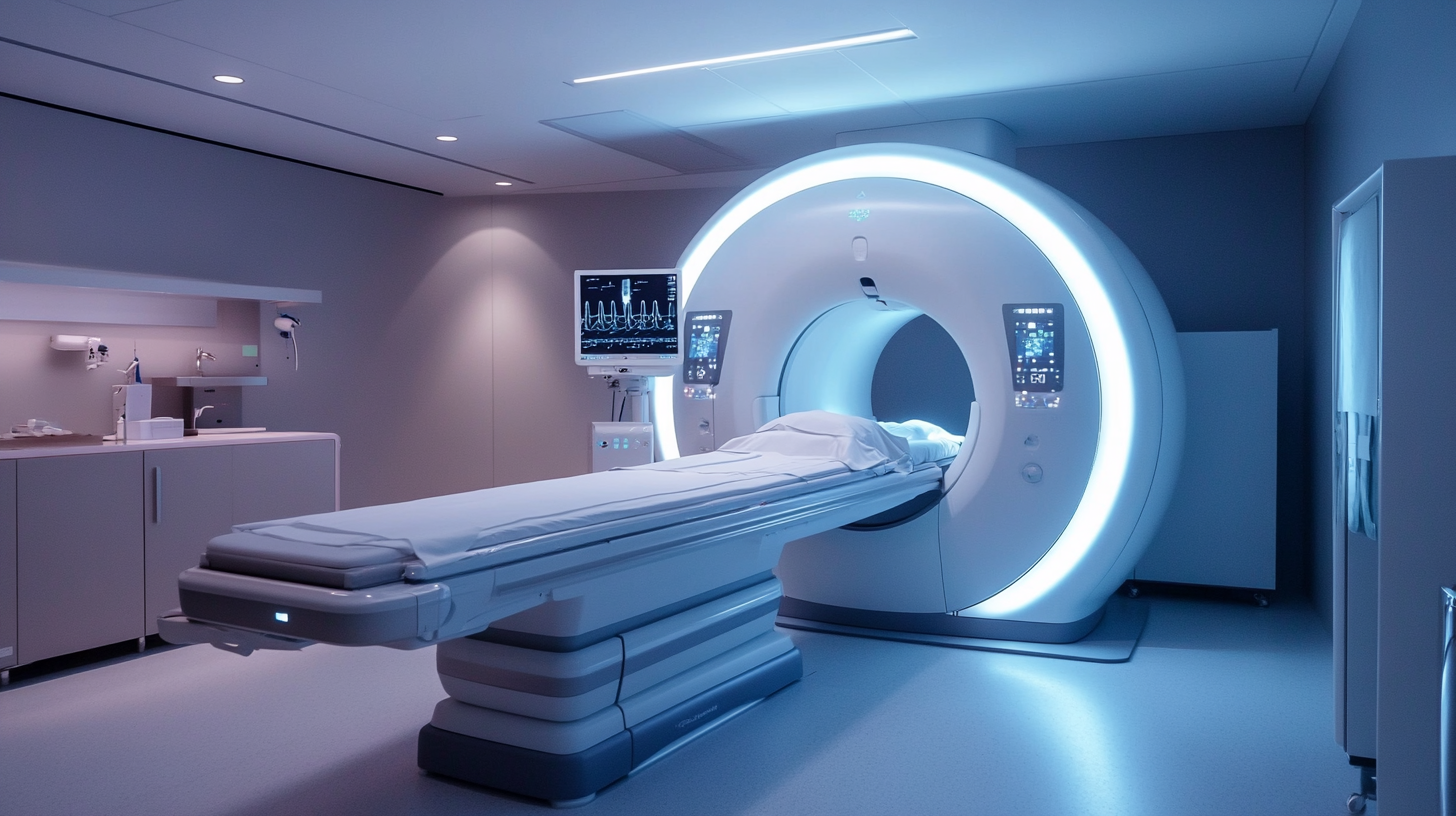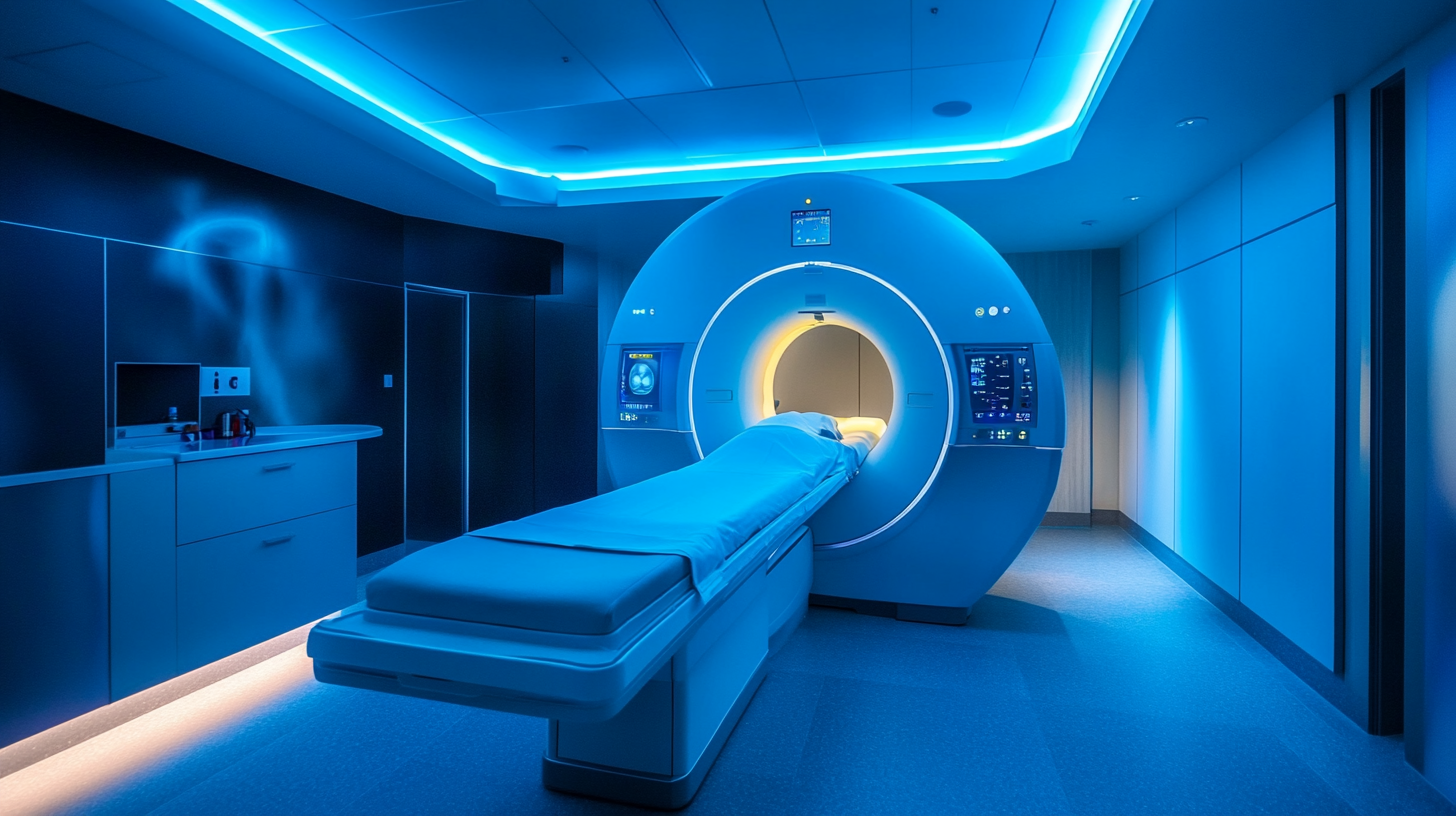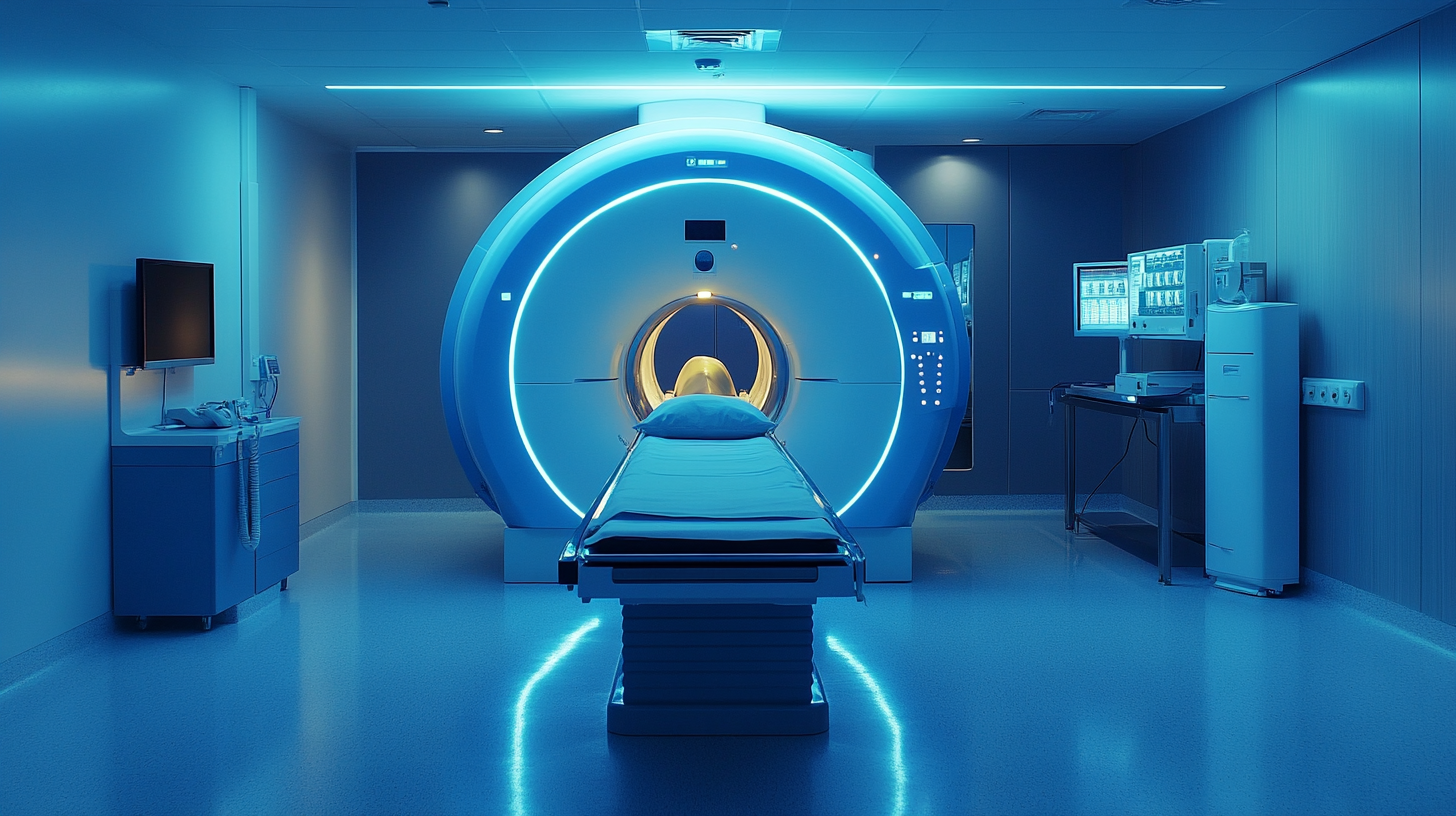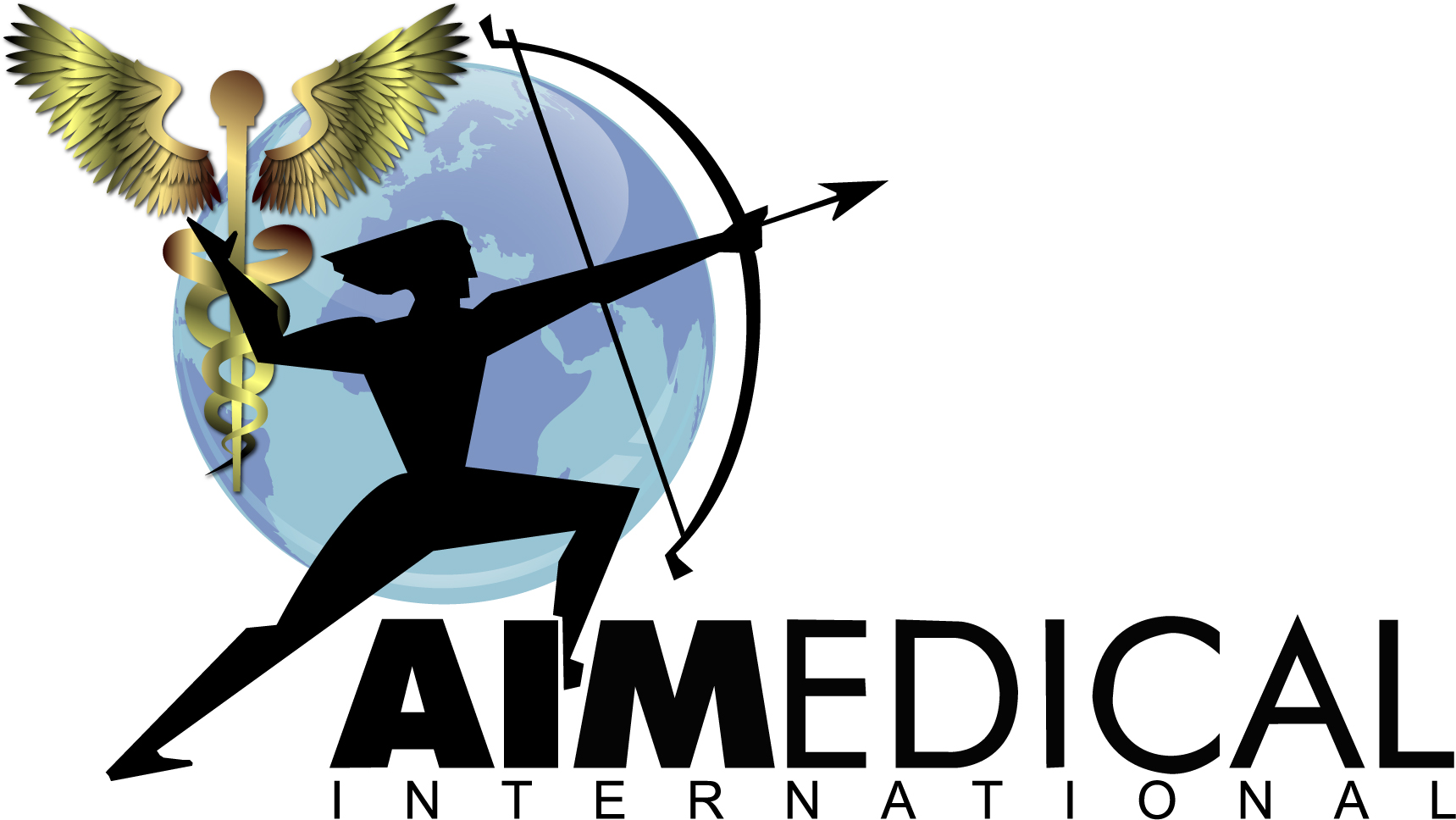Ultimate Guide to Choosing the Best MRI TMS for Your Facility
 In the ever-evolving landscape of medical technology, selecting the right MRI TMS (Magnetic Resonance Imaging and Transcranial Magnetic Stimulation) system for your facility is a crucial decision that can impact both patient outcomes and operational efficiency. As we delve into 2025 industry trends, it becomes apparent that advancements in MRI TMS technology are influencing everything from diagnostic precision to treatment protocols. This ultimate guide aims to equip healthcare professionals with essential insights and practical steps for making informed choices when integrating an MRI TMS system into their practice. By understanding emerging trends and how to effectively evaluate options, facilities can ensure they not only meet current demands but also remain at the forefront of medical innovation in the coming years. Join us as we explore the factors you need to consider to choose the best MRI TMS for your facility's unique needs.
In the ever-evolving landscape of medical technology, selecting the right MRI TMS (Magnetic Resonance Imaging and Transcranial Magnetic Stimulation) system for your facility is a crucial decision that can impact both patient outcomes and operational efficiency. As we delve into 2025 industry trends, it becomes apparent that advancements in MRI TMS technology are influencing everything from diagnostic precision to treatment protocols. This ultimate guide aims to equip healthcare professionals with essential insights and practical steps for making informed choices when integrating an MRI TMS system into their practice. By understanding emerging trends and how to effectively evaluate options, facilities can ensure they not only meet current demands but also remain at the forefront of medical innovation in the coming years. Join us as we explore the factors you need to consider to choose the best MRI TMS for your facility's unique needs.
Understanding the Basics of MRI TMS: What You Need to Know
When considering the latest advancements in medical imaging and treatment technologies, understanding the basics of MRI TMS (Transcranial Magnetic Stimulation) is essential for healthcare facilities. MRI TMS integrates magnetic resonance imaging with therapeutic TMS, providing a non-invasive approach to diagnosing and treating neurological disorders, such as depression and anxiety. According to a recent report by the American Psychiatric Association, approximately 30% of patients with major depressive disorder do not respond adequately to conventional treatments, highlighting the increasing demand for innovative solutions like MRI TMS.
The technology behind MRI TMS utilizes high-powered magnetic fields to stimulate specific areas of the brain, enhancing the accuracy of treatment while minimizing side effects. Research indicates that procedures involving MRI-guided TMS improve the targeting of stimulation sites, leading to significant improvements in patient outcomes. For instance, a study published in the Journal of Neuropsychology found that MRI TMS can yield remission rates exceeding 50% in treatment-resistant depression, showcasing its potential as a groundbreaking therapeutic approach. As facilities explore their options in acquiring MRI TMS systems, understanding these foundational elements is crucial for effective implementation and improved patient care.
Key Features to Consider When Selecting an MRI TMS
When selecting an MRI TMS (Transcranial Magnetic Stimulation) system for your facility, several key features should be prioritized to ensure optimal performance and patient safety. One of the most critical aspects is the strength of the magnetic field. A robust study from the American Journal of Psychiatry indicates that systems offering magnetic field intensities of 1.5T or higher provide more effective therapeutic outcomes, significantly enhancing the depth of brain stimulation, which is vital for treating mental health disorders.
Another essential consideration is the system's versatility and ease of use. Research published by the American Society of Neuroradiology highlights that user-friendly interfaces not only improve the efficiency of medical staff but also contribute to better patient experiences. Facilities that invest in advanced MRI TMS systems, characterized by automated settings and comprehensive training programs, report a 30% decrease in procedure times, allowing for increased patient throughput without compromising safety or accuracy.
Lastly, the integration capabilities of the MRI TMS unit should not be overlooked. Systems that can seamlessly interface with existing imaging technology and electronic health records enhance workflow and data management. A report from the Radiological Society of North America suggests that facilities utilizing integrated systems can improve patient outcomes by 20%, as it enables more accurate assessments and timely treatment adjustments based on comprehensive imaging data.
Ultimate Guide to Choosing the Best MRI TMS for Your Facility - Key Features to Consider When Selecting an MRI TMS
| Key Features | Description | Importance Level |
|---|---|---|
| Image Resolution | Defines the clarity of images produced by the MRI machine. | High |
| Field Strength | Measured in Tesla (T); higher strength generally improves image quality. | High |
| Software Capabilities | Includes advanced imaging techniques and post-processing functions. | Medium |
| Patient Comfort | Features like wider openings and quieter operation improve the patient experience. | High |
| Ease of Use | User-friendly interfaces can reduce the learning curve for technicians. | Medium |
| Maintenance and Support | Availability of technical support and ease of maintenance can affect operational downtime. | High |
| Cost of Operation | Includes power consumption, service contracts, and consumables. | Medium |
Evaluating the Cost: Budgeting for MRI TMS Acquisition
When considering the acquisition of an MRI Transcranial Magnetic Stimulation (TMS) system for your facility, budgeting is a critical first step that lays the foundation for a successful purchase. The costs associated with MRI TMS can vary significantly based on factors such as technology level, brand reputation, and additional features included in the system. A comprehensive evaluation of your budget should account not only for the initial purchase price but also for ongoing costs including maintenance, training, and potential upgrades. Establishing a clear budget will help you prioritize your needs and provide a framework for your purchasing decisions.
In addition to the direct costs of the MRI TMS system, it's important to factor in the financial implications of operation. Consider the staffing requirements for proper usage, as well as any potential downtime that may arise during training or maintenance. Investigating potential financing options or partnerships might also help alleviate the financial burden. Ultimately, a thorough understanding of both the upfront and long-term costs will empower your facility to make an informed decision that balances quality, capability, and financial sustainability.
Assessing Manufacturer Reputation and Support Services
 When selecting an MRI TMS for your facility, assessing manufacturer reputation and support services is paramount. According to a report by Grand View Research, the global MRI market is projected to reach $7.8 billion by 2025, indicating that facilities are investing heavily in advanced imaging technologies. A manufacturer with a strong reputation not only ensures product reliability but also indicates a history of innovation and customer satisfaction. Research from the Medical Imaging and Technology Alliance (MITA) emphasizes that facilities should prioritize manufacturers that are known for high-quality equipment and positive performance reviews.
When selecting an MRI TMS for your facility, assessing manufacturer reputation and support services is paramount. According to a report by Grand View Research, the global MRI market is projected to reach $7.8 billion by 2025, indicating that facilities are investing heavily in advanced imaging technologies. A manufacturer with a strong reputation not only ensures product reliability but also indicates a history of innovation and customer satisfaction. Research from the Medical Imaging and Technology Alliance (MITA) emphasizes that facilities should prioritize manufacturers that are known for high-quality equipment and positive performance reviews.
In addition to reputation, the quality of support services is crucial. The American College of Radiology (ACR) states that optimal support from manufacturers can reduce downtime and enhance workflow efficiency. An effective support system includes timely maintenance, training for staff, and accessible troubleshooting resources. Facilities must evaluate the responsiveness and availability of customer support teams as part of their selection process. A supplier that offers comprehensive after-sales services can significantly enhance the value of the TMS investment and ensure sustained operational success.
Future-Proofing Your Facility: Trends in MRI TMS Technology
As technology continues to evolve, the landscape of MRI TMS (Transcranial Magnetic Stimulation) is being reshaped by several key trends, ensuring that facilities can stay ahead of the curve. One significant trend is the integration of artificial intelligence (AI) in imaging processes. AI algorithms can enhance image quality, reduce scan times, and improve diagnostic accuracy, making it easier for healthcare providers to develop personalized treatment plans. Facilities that adopt these cutting-edge technologies will not only improve patient outcomes but will also attract a broader patient base seeking the latest advancements in care.

Another important trend is the miniaturization of MRI TMS equipment. Innovations in hardware design allow for more compact machines that can fit into smaller spaces while providing high-quality imaging capabilities. This shift not only makes MRI TMS more accessible to a range of facilities, including outpatient settings, but also facilitates easier installation and maintenance. By future-proofing their facilities with this evolution in technology, healthcare providers can create a more efficient workflow, ultimately enhancing the patient experience and optimizing resource utilization.
